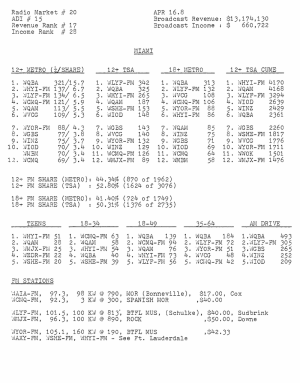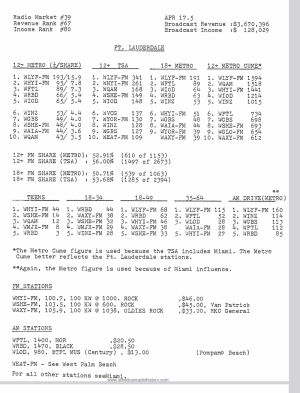In 1967, the FCC changed the Pre-Sunrise Authority rules for AM radio station. All Class III stations known in the industry as regional channels: 550,560,570,580,590,600,610,620,630,790,910,920,930,950,960,970,980,1150,1250,1260,1270,1280,1290, 1300, 1310, 1320,1330, 1350,1360, 1370, 1380, 1390, 1410, 1420, 1430, 1440, 1460, 1470, 1480, 1590 & 1600 were authorized to operate with a minimum of 500 watts at 6 a.m. using daytime facilities. A few Class II stations were able to get pre-sunrise either the US Clear Channel on the frequency was a great distance away or the station was distant enough from the foreign clear channel dominant on channel. For instance the station in Sylva, NC on 680 KHz with 1kw-day, 250w-DA-N had 500 watts NDA pre-sunrise because the dominant 680 was in San Francisco. Despite a 50 kw Class II in Raleigh, it did not have to be protected from 6 a.m. until sunrise by the PSA authorization. Prior to 1967 for a few years in the earlier 1960s, the FCC allowed AM stations on these channels to sign on at 4 a.m. local time with the daytime power but the operations would be terminated if fulltime stations on those frequencies received interference. It was chaos and the 1967 rule was a compromise and still followed today. By the 1980s, the FCC had begun to authorize post sunset authority power levels. Many of the AMs operating on the old regional channels had stepped down post sunset power levels for a couple hours past sunset whereas the stations operating on the foreign and domestic clear channels immediately went to the post sunset authorization power immediately at sunset. Some stations on these channels, especially domestic channels, go no nighttime power whereas some got as low as 1 or 2 watts. Hypothetically these low powers were not to interfere with existing authorized full time stations and while it may not have at locations near those stations, all these flea powers resulted in the noise floor of AM radio increasing to the point where DXing on the old regionals is almost impossible and DXing the Clear Channels is much more of a challenge.



